-
Getting there
-
All Nippon Airways (ANA) and Japan Airlines (JAL) fly daily from Singapore to Kagoshima via Tokyo. Travel time including transit is 10 to 13 hours. Return fares start at about $900 a person.
You can also take a direct flight from Singapore to major Japanese cities such as Tokyo or Osaka, then hop on to Japan's famous bullet train for a trip to Kagoshima-Chuo station, which is located in Kagoshima's city centre.
Buy the Japan Rail Pass (www.japan-rail-pass.com) for access to most services on the nation-wide railway network including the Shinkansen. A seven-day pass costs $349 for adults and $175 for children aged between six and 11. Those aged five or younger travel for free.
The easiest and fastest way to travel around Kagoshima is by car. Rent a sedan that can seat up to five at 10,800 yen (S$136) for two days with Eki Rent-a-Car (www.ekiren.co.jp/phpapp/en).
Tips
• Take your time: Kagoshima, about 1,300km away from breakneck, tight-suited Tokyo, is slow-living country. Do plan to stay for at least two to three days to have an authentic taste of the life here.
• Join the locals and enjoy a soak in the prefecture's abundant hot springs once before breakfast for a pick-me-up and once after dinner to unwind.
• Best time to go: May and early June, as well as October and November when it is cool but not cold.
• Shochu tours: For those who like to knock back a glass or two, follow your nose to one or five of Kagoshima's 110 or so shochu distilleries. Kagoshima, where more shochu is consumed annually than any other prefecture in Japan, makes the potent liquor with locally grown sweet potatoes as well as brown sugar. The most famous distillery is Mejigura (www.meijigura.com) and it is open all year-round except on Jan 1 and Dec 31.
• Vinegar experience: Those who cook may relish a visit to vinegar factory Sakamoto Kurozu. The 200-year-old family business still ferments its amber-coloured vinegar in large black vats in the open air. It also sells products such as vinegar candy and beverages. An on-site restaurant serves vinegar-infused set meals and boasts views of Sakurajima on a clear day.
Wandering through whimsical Kagoshima
Kagoshima, the farthest prefecture from Tokyo on the Japanese mainland, is peaceful and meditative

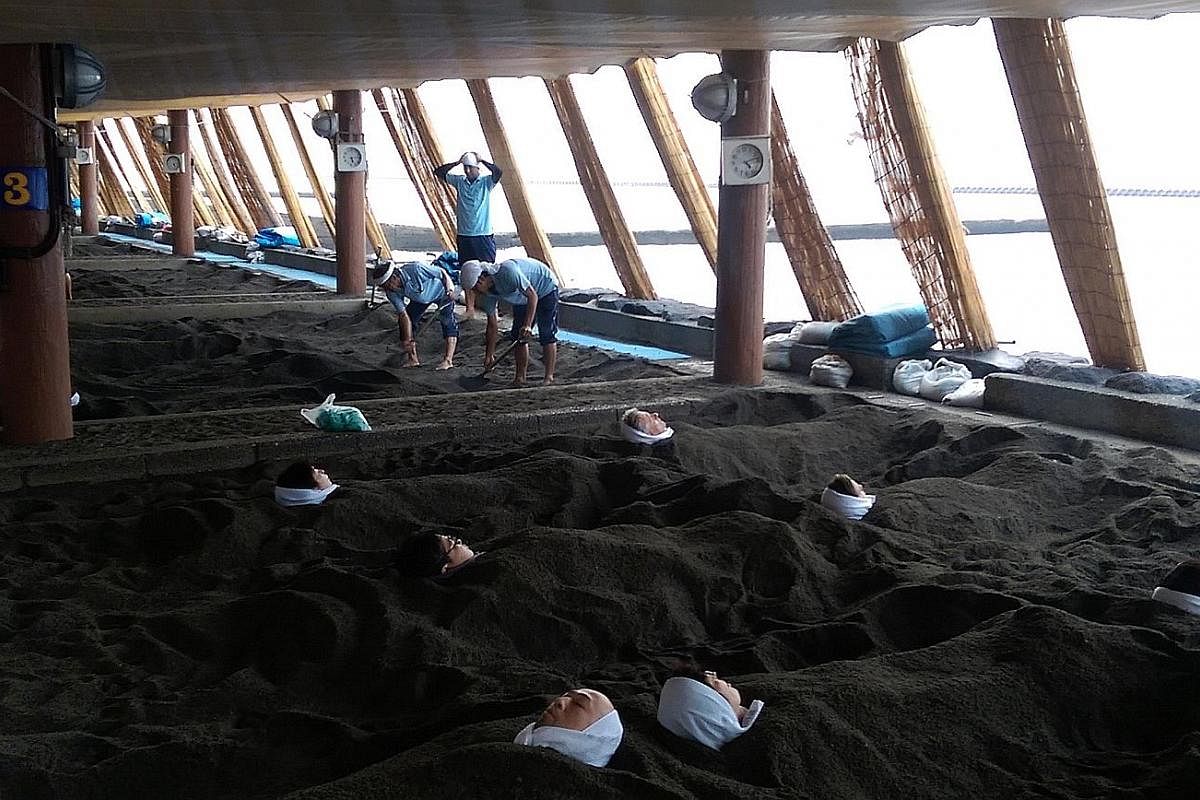
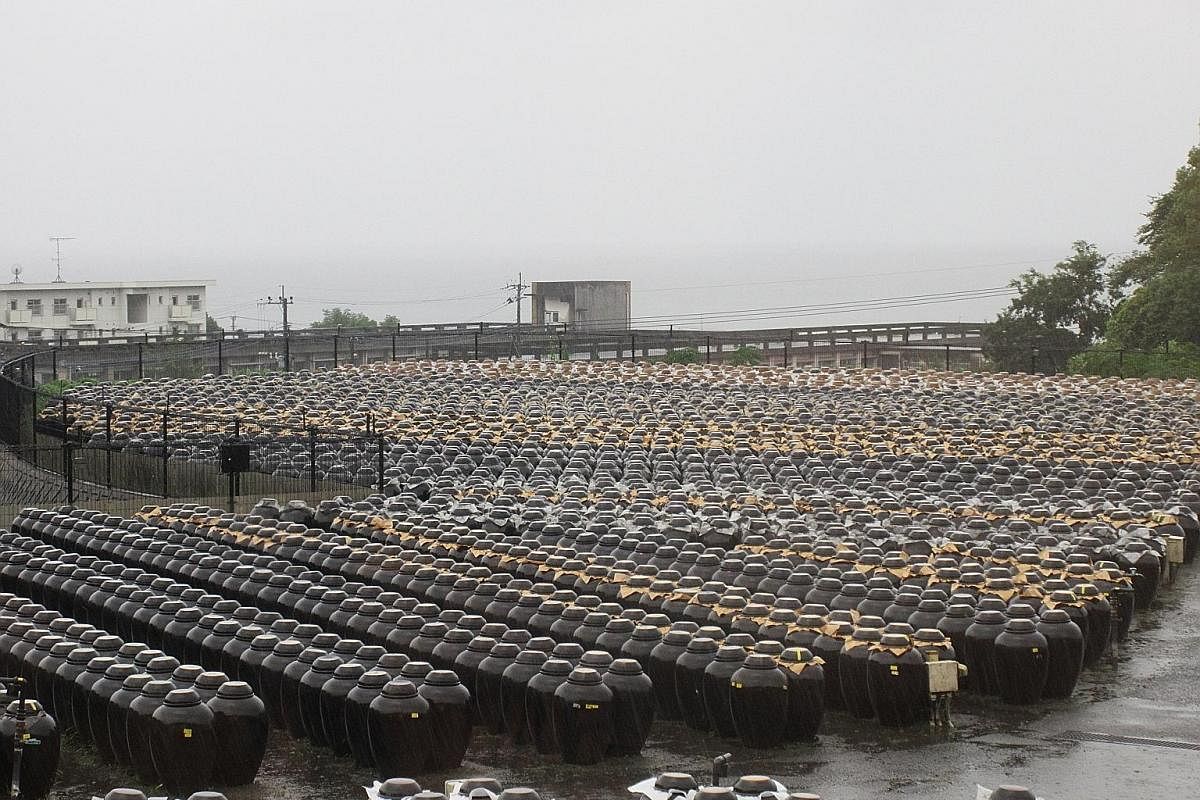
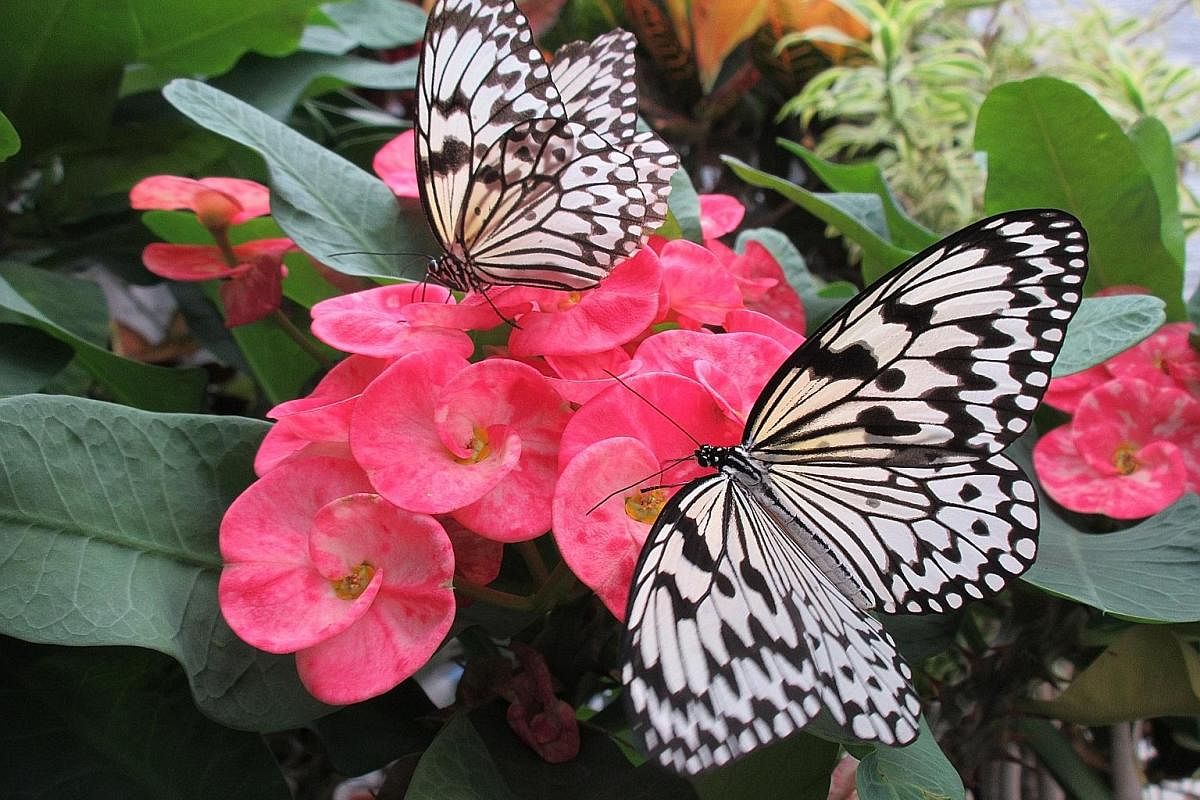
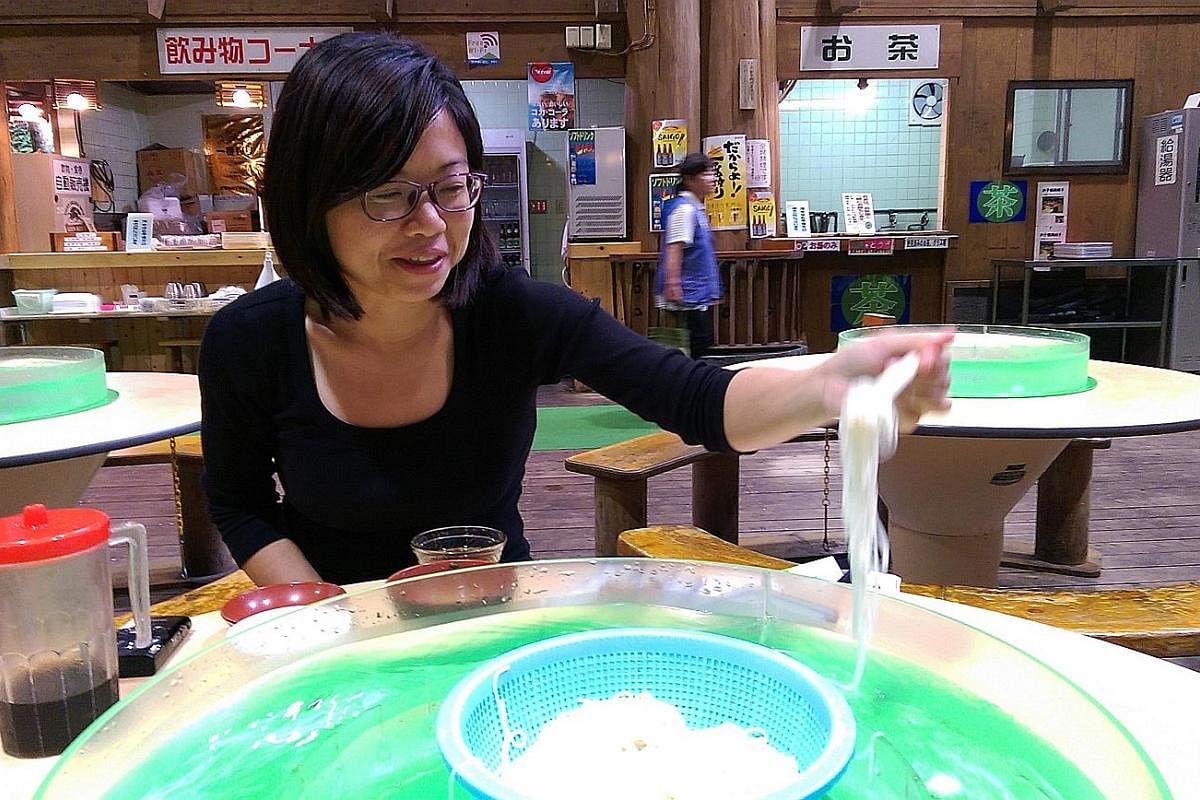
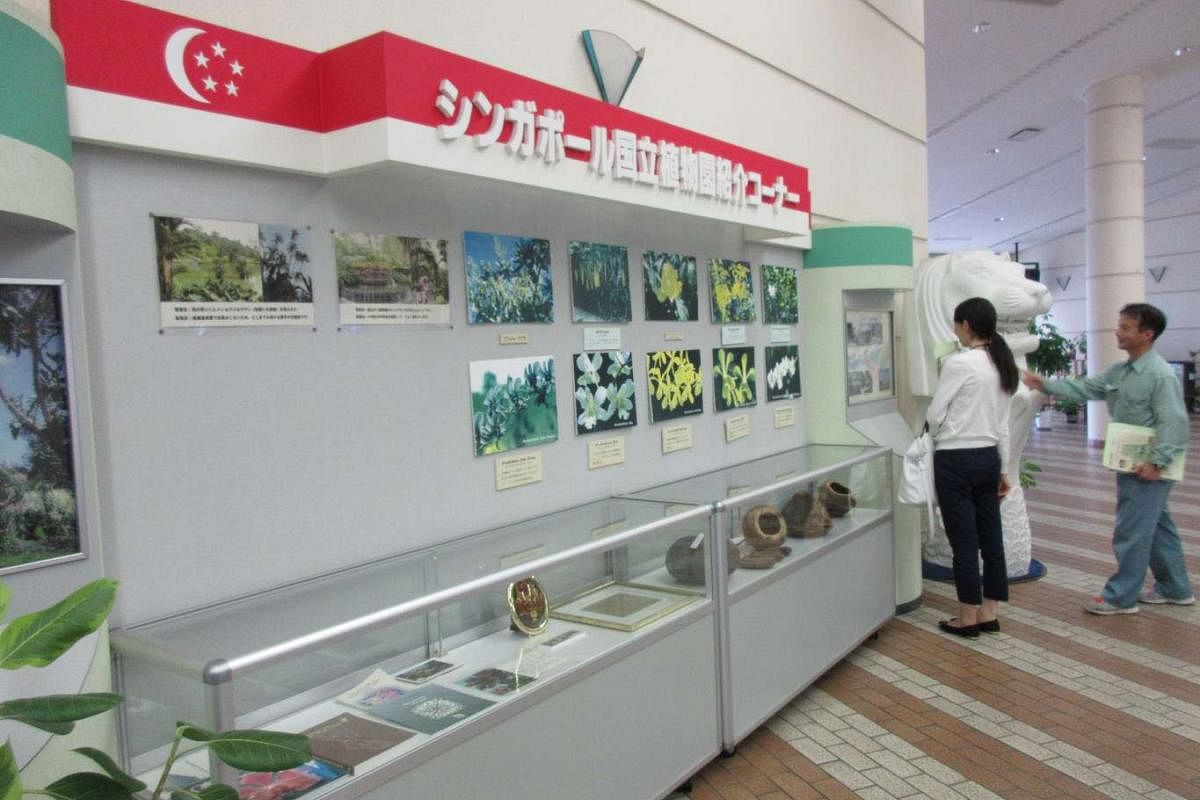
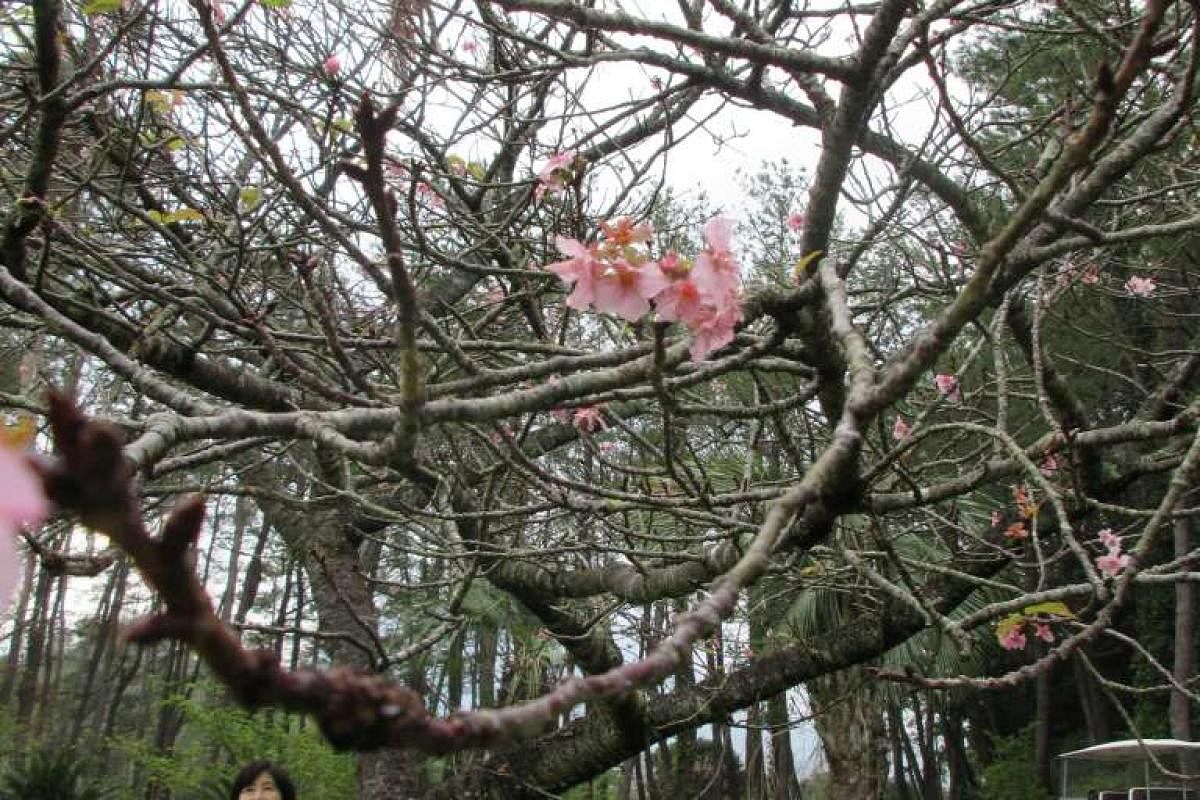

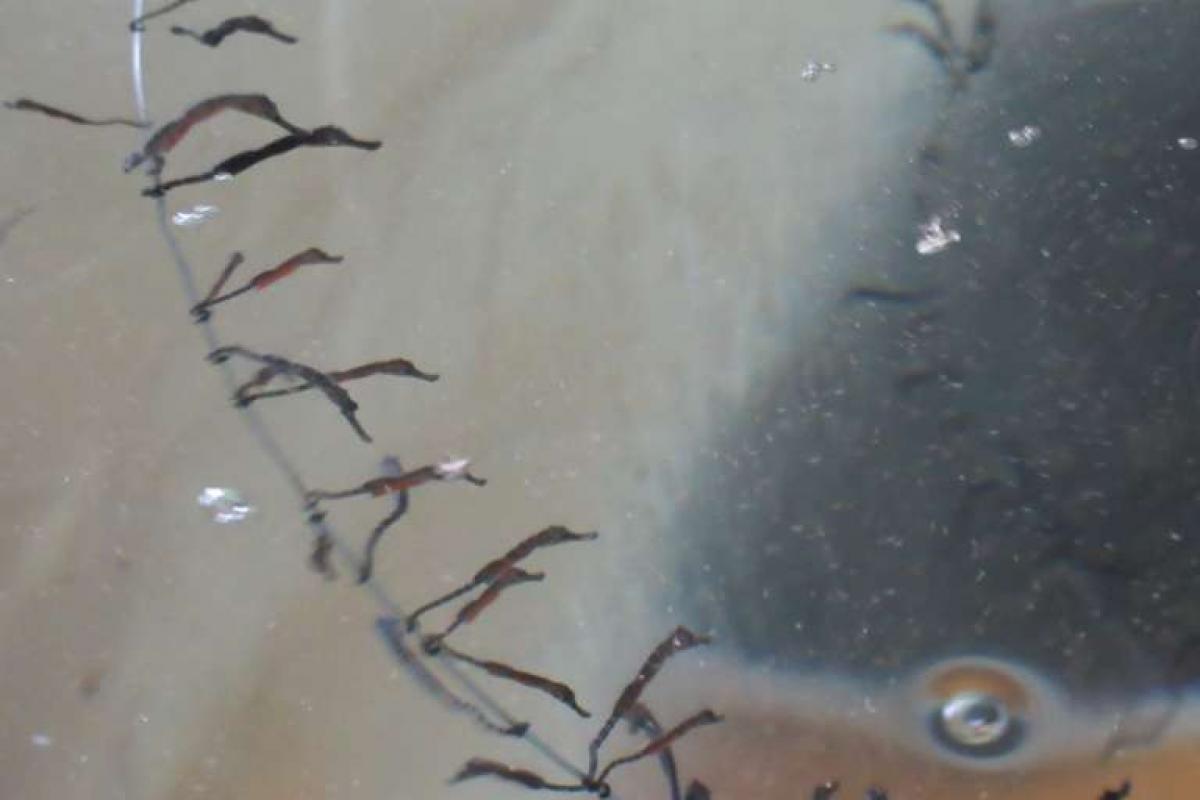
The scent of osmanthus is in the air as we walk through a small garden in the valley of Tosenkyo.
The surroundings are quiet and meditative. In the pond, carp dart around. Over them, a small wooden bridge arches above, its reflection rippling in the water.
After a walk in the outdoors, we settle down inside the high- ceilinged restaurant called Tosenkyo Somen Nagashi, ready for a lunch of somen, or thin white Japanese noodles.
Here, you do not just slurp the noodles down. You have to participate in a kind of game: by picking the noodles up with your chopsticks and putting them into a doughnut-shaped basin.
In the basin, cold spring water is constantly flowing and swirling. When the noodles go into the current, you try to catch them with your chopsticks.
The spring water, with a temperature of about 13 deg C, originates in the valley and is supposed to be good for health. The noodle dish soaked in spring water is a summer favourite with locals.

Nagashi somen (meaning flowing noodles) is also found elsewhere in Japan, but the noodles typically run down a bamboo ramp and customers have to wait to catch the noodles at the end of the ramp.
The basin way of eating nagashi somen was invented by Tosenkyo Somen Nagashi so customers need not waitlong to catch the noodles.
Excited to try this novel dish, I deposit a big bundle of noodles in the water.
Immediately, they seem to take on a life of their own, disentangling completely as they go round and round in the basin. Only a few strands latch onto my chopsticks as I try clumsily to catch them.
Ms Tomoyo Hidaka, my guide in Kagoshima in the southern Japanese region of Kyushu, gives me a tip: Simply stick your chopsticks in the basin and wait for the noodles to come to you.
It works wonders.
After that, I dip my catch in a soba sauce infused with wasabi and finely chopped spring onions. Delicious.
OF SEAHORSES AND MERLION
Taking it slow is the best way to enjoy Kagoshima, the prefecture on mainland Japan farthest from the bustle of Tokyo.
You can feel it walking on the streets. There are fewer cars, people and tall buildings. Some taxi drivers place mini vases of flowers in their cars and put up posters introducing the "flower of the month" (White Rose in October when I am there).
Life in the slow lane beckons at Seahorse Ways (www.seahorseways.com), a seahorse breeding centre and cafe located in a bungalow perched on the coast overlooking the East China Sea.
I am not sure which is more alluring: the breathtaking view or the seahorses.
Two sides of the cafe look out to the sea as well as Mount Kaimon, a 924m volcano known to locals as mini Mt Fuji for its likeness to the national icon.
Sipping coffee as I watch waves splash onto the rocky coast, I cannot imagine a better way to spend an afternoon.
It gets better though. Seahorses big and small swim languidly in big and small tanks and it is fun to see these fragile, odd-looking creatures close up.
I ask the affable, suntanned owner of the place, Mr Shin Kato, about the sea creature he has been hooked on since a diving trip in New Zealand more than 10 years ago.
"Seahorses live slow lives," says the 45-year-old father of two. "Here, so do we."
Moving east along the coast, we arrive at Kagoshima Flower Park (fp-k.org/english/index.html), a 36ha garden where a Merlion lives.
Yes, a Merlion. The Kagoshima park has been exchanging know-how and species with Singapore's Botanic Gardens since it opened in 1996, park official Masami Shimofurutachi tells us, and a man-sized Merlion statue standing in the visitor centre attests to that connection with Singapore.
We zip around the quiet park in a buggy (500 yen, or S$6.20, an hour) under the cool autumn sky. There is an indoor butterfly enclosure where we admire dozens of tree nymphs, the biggest butterfly species in Japan, as they flutter from one plant to another.
In a nearby greenhouse, tropical species including the cyrtostachys palm - the symbol of the Singapore Botanic Gardens - thrive. The bougainvillea, that pink-flowered bush ubiquitous in Singapore, is presented as a rare species.
Our tour takes us to an open field where a few sakura trees are blooming with out-of-season cherry blossoms.
Mr Shimofurutachi says the trees are confused and are blossoming six months earlier than nature intended because a recent typhoon stripped it of its leaves.
Thus the poor trees have been fooled into thinking that spring has come. This lucky mix-up, however, gives us a chance to view these resplendent blooms, a handsome sight about which no one can really complain.
LIFE ON A VOLCANO
Sakura trees may be delicate creatures, yet they have a namesake volcano which is anything but.
Looming over 3.5km off the coast of Kagoshima city is Sakurajima, or Sakura Island.
It is one of the most active volcanoes in Japan. On clear days, one can see fumes rising from the southern peak of the mountain.
From the city, it takes only 15 minutes to reach the volcano island by ferry.
We head to the "volcano museum" at the visitor centre. Here, we learn how residents on the island live with a smoking furnace on their doorstep, how they get the best out of the land by growing loquats and daikon (radish) and the major eruptions of the volcano in history.
For volcano geeks or information sponges like me, there are television screens showing real-time volcano monitoring data, as well as scale models of the mountain and its evolution.
There is even a souvenir shop featuring Sakurajima-shaped pins, cute cartoon daikon magnets and jewellery made with tiny volcanic rocks.
Any skittishness I had of setting foot on an active volcano - after all, the last time it had a fatal eruption was not that long ago, in 1914 - quickly dissipates. Nobody here seems to be unduly worried.
BATHING WITH STRANGERS
Besides being the land of volcanoes, Japan is also the land of hot spring bathhouses, or onsen. The Japanese love a good hot soak in the tub. In Kagoshima, one can also soak in the sand.
The only place to do so is on the beaches of Ibusuki district.
We change into cotton kimono-like robes called the yukata at the Ibusuki Natural Sand Bath Centre Saraku (sa-raku.sakura.ne.jp/en/index.html) before walking to where workers are busy digging pits in the black sand.
"Lie down here," one of the workers says to me, pointing to a pit as he wipes away the sweat on his brow.
I do as I am told. A female worker appears by my side. She wraps a small towel around my hair and face and straightens my yukata.
That done, she begins to shovel sand on me until my whole body except my head is covered with the black stuff.
The sand is not as hot as I thought but surprisingly heavy - I can feel my heart beating under its weight. I start to sweat. I try to focus on the sea breeze blowing on my face and the blue skies overhead.
A minute or two goes by. Five, 10... I'm actually getting used to it.
Bathers are advised to keep it to 15 minutes though.
After shaking off the sand, we walk back to the bathhouse for the next stop: the good old-fashioned onsen experience.
This is where it can get a little tricky. There are separate baths for men and women, but every one has to strip naked as custom dictates.
I have never shared a bath in my birthday suit with so many strangers - any stranger, in fact.
But seeing as nobody bats an eyelid, I quickly feel at ease, even liberated.
Afterwards, Ms Kazuko Seguchi, my travelling companion, says to me with a smile: "You are now ready for any onsen in Japan."
•This trip was sponsored by Japan's Ministry of Foreign Affairs
WATCH THE VIDEO
Chase nagashi somen in flowing cold water: str.sg/4sVP
Join ST's Telegram channel and get the latest breaking news delivered to you.
A version of this article appeared in the print edition of The Sunday Times on February 12, 2017, with the headline Wandering through whimsical Kagoshima. Subscribe

